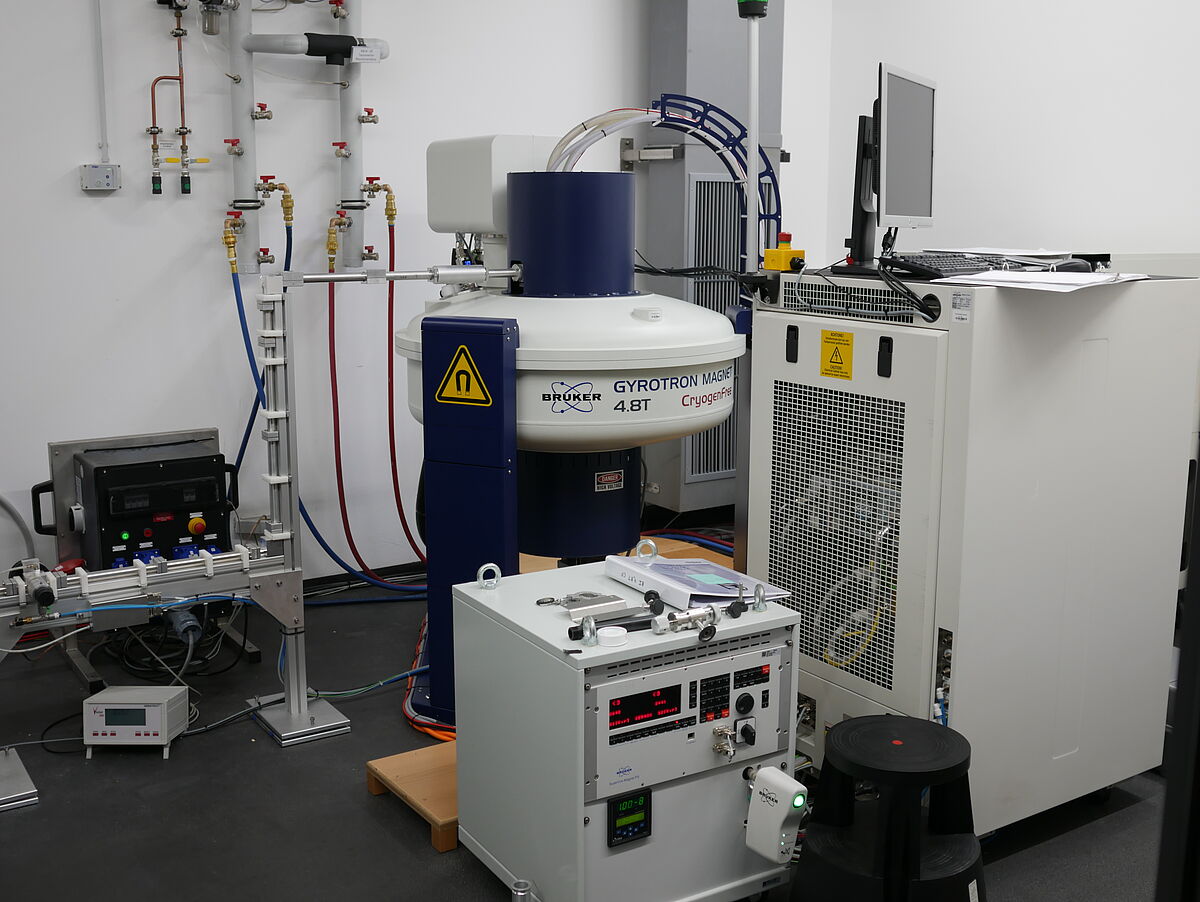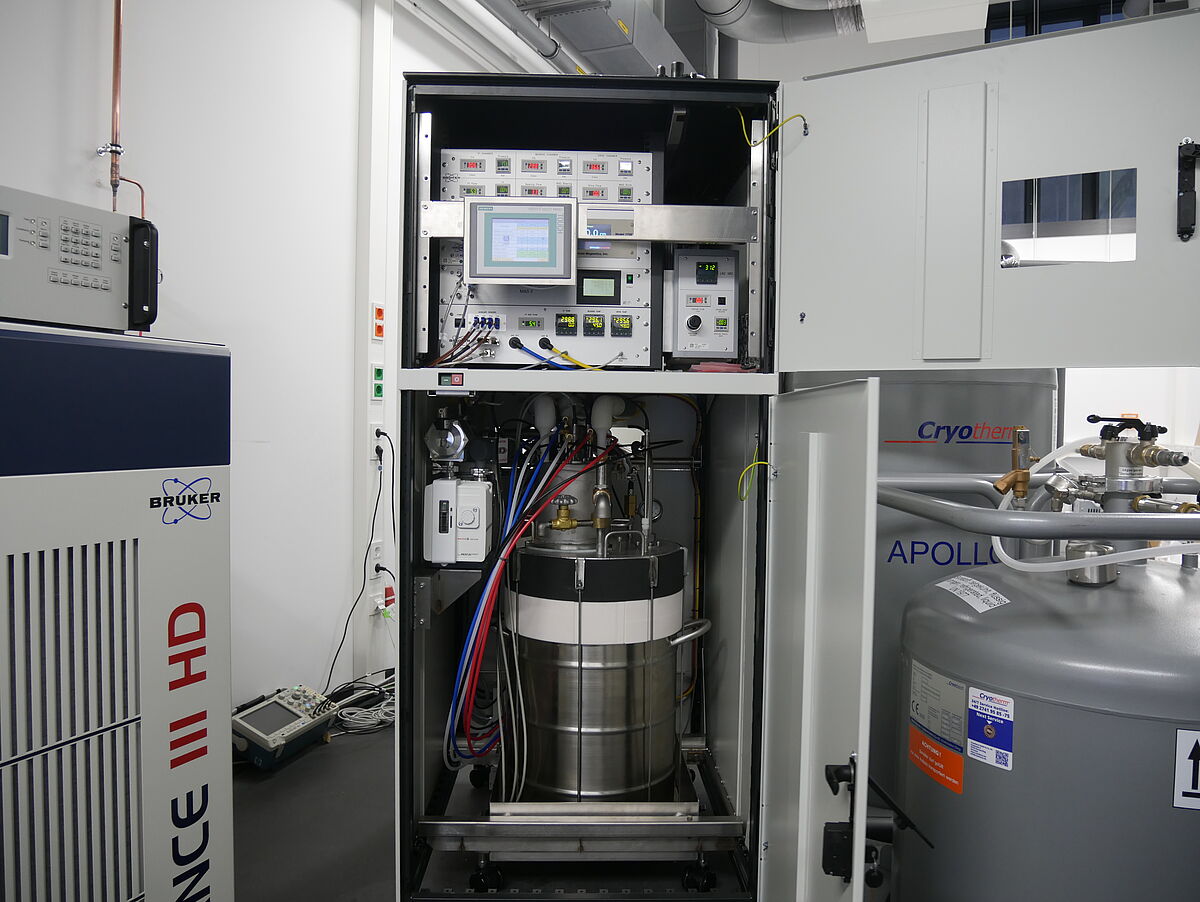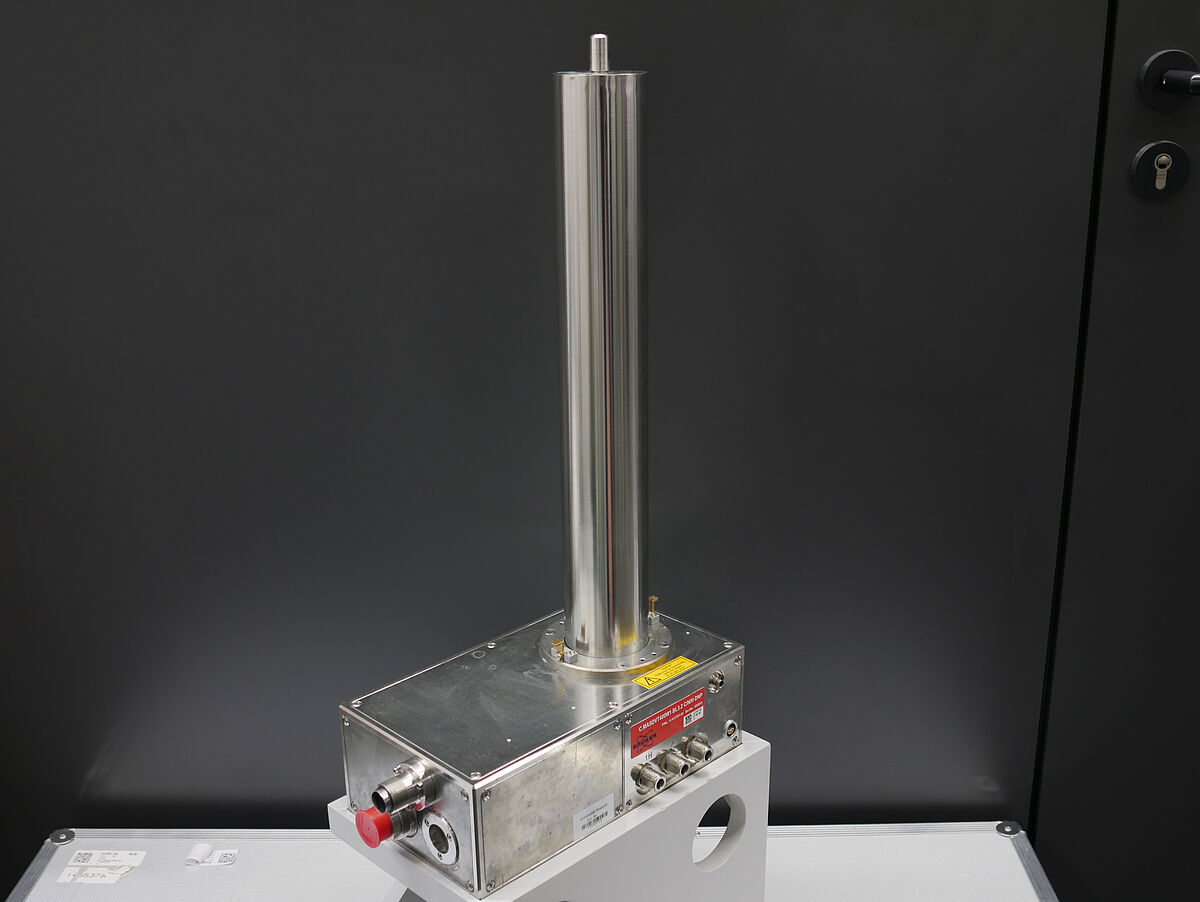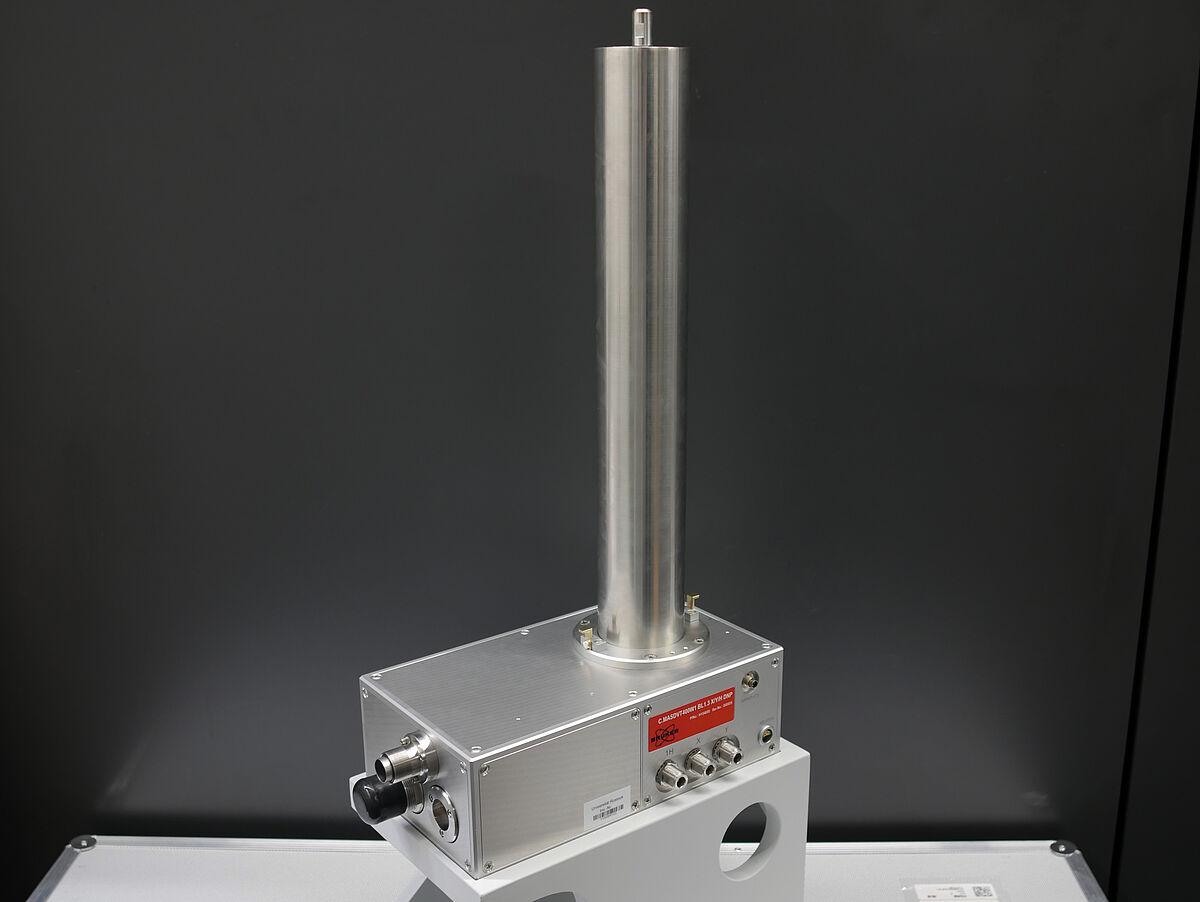Accessibility for Research of other Institutions
If you are interested in using this instrument within a reseacr collaboration, please contact us.
Bruker/CPI 263 GHz gyrotron
The second-generation Bruker/CPI gyrotron works in the second harmonic cyclotron mode at a 4.8 T magnetic field. The magnetic field is generated by a cryogen-free superconducting magnet which eliminates the requirement for liquid helium. The microwaves are generated in continuous-wave operation with a power of more than 25 W.
Bruker low-temperature MAS cabinet
A cryogenic MAS system allows the cooling of bearing and drive as well as variable-temperature (VT) gases through three heat exchangers immersed in liquid nitrogen. Condensation and evaporation rates can be controlled and the filling level in each heat exchanger can be managed separately. This ensures the best possible stability during the operation at low temperatures. The exhaust gas of the probe is used to precool the MAS and VT gas streams and reduce the consumption of liquid nitrogen. An in-house nitrogen gas generator operating on the pressure swing adsorption (PSA) principle provides the gas feed.
Bruker 400 MHz 3.2 mm LT-MAS DNP
Wide-range CP/LT-MAS triple resonance probe with rotor insert and eject system. This probe is optimized for MAS DNP with maximum sensitivity due to the large sample volume of 30 µL. The triple-resonance circuit allows cross polarization and high-power 1H decoupling as wells as optimized detection sensitivity for 13C and 15N.
- microwave guide allows 263 GHz irradiation of the sample rotor
- MAS up to15 kHz at 100 K and up to 24 kHz at room temperature
- temperature range: (100 K – 300 K)
- interchangeable tuning elements for other nuclei between 31P and 15N
Bruker 400 MHz 1.3 mm LT-MAS DNP
Wide-range CP/LT-MAS triple resonance probe with rotor insert and eject system. This probe with an active volume of 1.5 µL allows to perform MAS experiments with up to 40 kHz at 100 K. Due to the high inductivity of the solenoid coil the loss of sensitivity due to the small sample volume is partially compensated and at the same time higher radio frequency fields can be applied. The triple-resonance circuit allows cross polarization and high-power 1H decoupling and features optimized detection sensitivity for 13C and 15N.
- microwave guide allows 263 GHz irradiation of the sample rotor
- MAS up to 40 kHz at 100 K and up to 65 kHz at room temperature
- temperature range: (100 K – 300 K)
- interchangeable tuning elements for other nuclei between 31P and 15N




